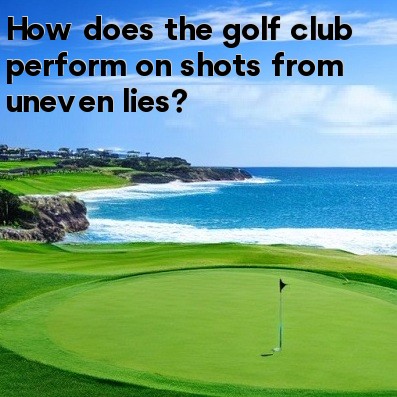
Golf is a game of precision and strategy, and one of the factors that can greatly influence the outcome of a shot is the lie of the ball. While the ideal situation for any golfer is to have a perfectly flat lie, this is not always the case. Uneven lies, where the ball is either above or below the feet or on a slope, can present unique challenges that require adjustment in how the golf club performs.
When it comes to shots from uneven lies, one of the key factors that golfers have to consider is how the lie affects the club's impact with the ball. Let's take a closer look at how the golf club performs on shots from uneven lies:
- Ball Above the Feet: When the ball is positioned above the feet, there are a few adjustments that need to be made. Firstly, due to the altered level of the ball, the golfer must stand slightly farther from the ball to maintain a comfortable posture. The golf club's lie angle is also affected, resulting in a more upright position, which can cause the shot to veer left. Therefore, it is necessary to aim slightly right of the intended target to compensate for this deviation.
- Ball Below the Feet: On the other hand, when the ball is below the feet, the adjustments are slightly different. The golfer needs to bend their knees more to get down to the ball's level, resulting in a lower stance. This lower stance can make it challenging to make clean contact with the ball, as the golfer may need to lift or scoop the shot to compensate. Additionally, the golf club's lie angle is flatter, causing the shot to veer right. Hence, aiming slightly left of the target can help offset the deviation.
- Slope: Shots played from uphill or downhill lies also require adjustments. When hitting from an uphill lie, the golfer needs to position themselves with their shoulders parallel to the slope to maintain proper balance. This adjustment helps to prevent errant shots caused by the club digging into the ground before striking the ball. On the other hand, when playing from a downhill lie, the golfer must avoid leaning back to maintain balance and prevent topping the ball. The stance should be wider, and the weight should be shifted towards the target to compensate for the slope pulling the golfer forward during the swing.
Aside from these adjustments, the choice of golf club can also impact the performance on shots from uneven lies. Generally, it is advisable to use a club with more loft, as it helps in getting the ball airborne quickly and with greater control. However, it is essential to consider the distance required and the trajectory needed to clear any obstacles or hazards.
It is important to note that practice and experience play a significant role in mastering shots from uneven lies. Golfers should invest time in practicing these shots to develop the necessary adjustments in their swing and improve their ability to navigate challenging lies on the course. By understanding how the golf club performs on shots from uneven lies and making the appropriate adjustments, golfers can improve their chances of hitting successful shots and lowering their scores.





